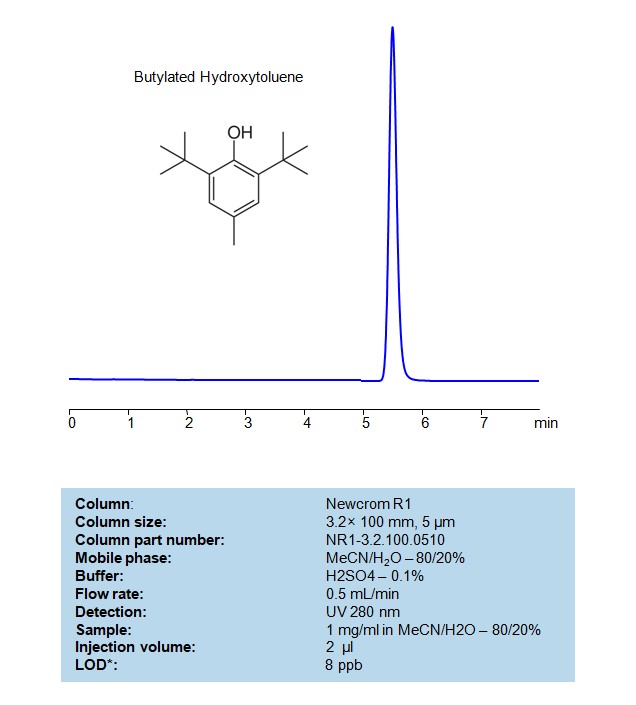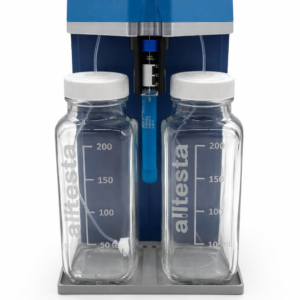HPLC Method for Analysis of Butylated hydroxytoluene on Newcrom R1 by SIELC Technologies
Separation type: Liquid Chromatography Reversed-phase

Butylated hydroxytoluene (BHT) is a synthetic antioxidant widely used in a variety of industries, particularly in food preservation, cosmetics, and industrial products.
Butylated hydroxytoluene is used primarily for preserving the freshness and quality of products by preventing oxidative degradation. While considered safe for use within regulatory limits, its potential health and environmental effects continue to be areas of study and discussion.
Butylated Hydroxytoluene can be retained, and analyzed on a mixed-mode Newcrom R1 column with a mobile phase consisting of water, Acetonitrile (MeCN), and sulfuric acid. This analytical method can be detected with high resolution and peak symmetry at a wavelength of 280 nm using UV detection.
High Performance Liquid Chromatography (HPLC) Method for Analyses of Butylated hydroxytoluene on Newcrom R1 Column by SIELC Technologies
Condition
| Column | Newcrom R1, 3.2 x 100 mm, 5 µm, 100 A, dual ended |
| Mobile Phase | MeCN/H2O – 80%, |
| Buffer | H2SO4 – 0.1% |
| Flow Rate | 0.5 ml/min |
| Detection | UV 280 nm |
| Injection volume | 2 µl |
| Sample | 1 mg/ml in MeCN/H2O – 80/20% |
| LOD* | 8 ppb |
Description
| Class of Compounds | Diphenyl ethers |
| Analyzing Compounds | Butylated hydroxytoluene |
Application Column
Newcrom R1
Column Diameter: 3.2 mm
Column Length: 100 mm
Particle Size: 5 µm
Pore Size: 100 A
Column options: dual ended





